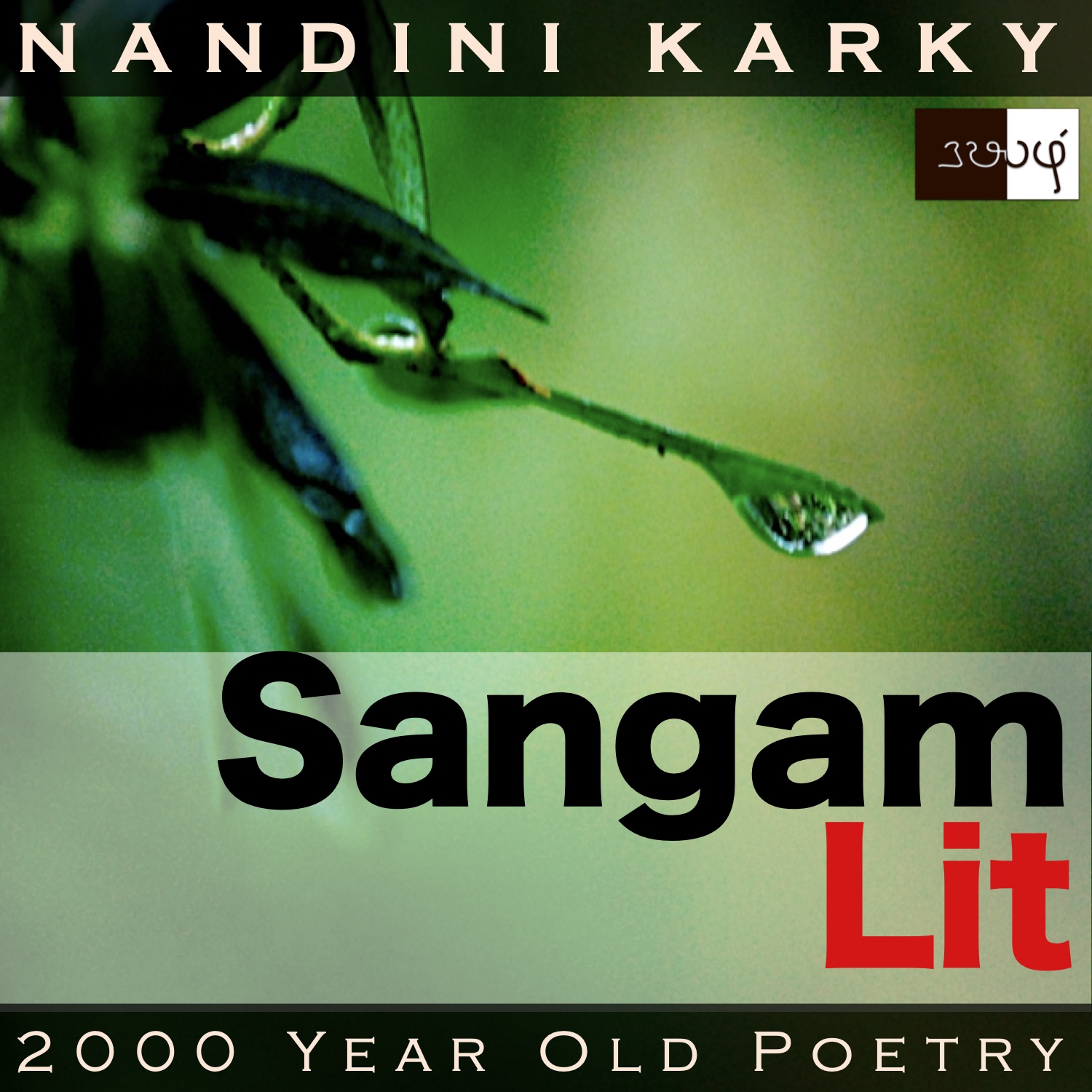Podcast: Play in new window | Download
Subscribe: Apple Podcasts | Spotify | Amazon Music | Android | iHeartRadio | TuneIn | RSS | More

In this episode, we relish an exquisite interaction between the elements, as depicted in Sangam Literary work, Kurunthogai 95, penned by Kabilar. Set in the mountains of ‘Kurinji’, the verse speaks in the voice of the man to his friend, explaining the reason for his troubled state.
மால் வரை இழிதரும் தூ வெள் அருவி
கல் முகைத் ததும்பும் பல் மலர்ச் சாரற்
சிறுகுடிக் குறவன் பெருந் தோட் குறுமகள்
நீர் ஓரன்ன சாயல்
தீ ஓரன்ன என் உரன் அவித்தன்றே.
A clash between water and fire flashes before our eyes in this one! True to its setting, the opening words ‘மால் வரை’ talk about ‘the mountains reaching up to the skies’. The quintessential element of this region smiles at us in ‘தூ வெள் அருவி’ meaning ‘pure white cascades’. Delighting our senses, appears ‘பல் மலர்ச் சாரல்’ meaning ‘slopes where many flowers bloom’. What a treat would it be to walk through those nature-soaked mountain paths! A father-daughter duo say hello in ‘சிறுகுடிக் குறவன் பெருந் தோட் குறுமகள்’ meaning ‘a mountain farmer of a small village, who has a young daughter with thick arms’. ‘Thick arms’ may not sound appealing to our modern ears but in the Sangam age, having fleshy arms was the first marker of feminine beauty! The phrase ‘நீர் ஓரன்ன சாயல்’ meaning ‘a gentle beauty akin to water’ introduces the first of the two clashing protagonists. In the final words ‘தீ ஓரன்ன என் உரன் அவித்தன்றே’ meaning ‘my energy akin to fire has been smothered’, the second protagonist appears and invites us to see how these splashes and sparks come together!
Fire seems to be bowing down before the might of water! The context reveals that the man had met the lady in the mountains and fallen in love with her. After their initial meeting, the man is unable to further his relationship with her and as a result is in an anguished state. Observing the changes in him, the man’s friend asks him the reason for his disturbance. To his friend, the man says, “From the soaring mountains, the pristine, white waterfall flows down into rock crevices and resounds in the many-flowered slopes. There, stands a small hamlet led by a mountain man and he has a young girl with well-endowed arms. It’s her water-like beauty that has sapped my fire-like strength!” With these words, the man makes it clear to his friend that the cause of his torment was none other than the mountain girl, who had captured his heart.
Simple enough story of boy meets girl, right? Let’s listen closely to unravel hidden facets any. The man starts from the peak of the mountains to say how the pure waterfall flows down from there, into the crevices in the rocks and echoes aloud. This sets the background music for this setting in the mountain slopes, blooming with flowers many. Then, the man talks about a tiny village in these slopes and how it is being led by the chief of the mountain tribe. After mentioning the village head, the man talks about this leader’s young daughter, who seems to be blessed with fleshy arms, much to the man’s liking. And then, the man describes how the beauty, nature and appearance of this lady, which he says is like that of water, has managed to put out the fiery fire of his strength!
An element of surprise can be sensed in the man’s words. It’s but gentle water, how come it has managed to conquer my roaring fire, the man seems to ask! Isn’t that the power of love to make the impossible possible? However, turning away from the nature of love, I would like to focus on how the man chooses to symbolise his lady love as ‘cool water’. This makes me reflect on the similes used in similar scenarios in literature from the West. In many a book and many a movie, I recollect hearing the woman characterised in the lines of ‘a warm fire amidst the falling snow’, ‘a face that was like sunshine on a cloudy day’, ‘a smile that could warm a man’s backbone’, and so on. Note how in these thoughts from the cold regions of the West, a woman is pictured as one who gives warmth, whereas in the sun-soaked Sangam country, many verses, like the current one, portray the woman as ‘rain-like’. In the end, the words we choose to describe those whom we love seem to be what we want the most. And perhaps today, in the midst of a world reeling under a pandemic, those in love would probably symbolise whom they love as ‘the cure’!




Share your thoughts...